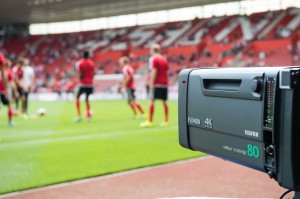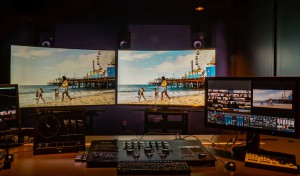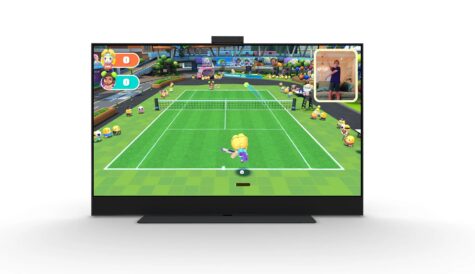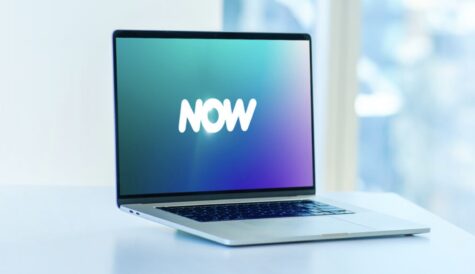Ultra HD: the big picture
With the first 4K channels starting to go live in Europe, Ultra High Definition has become a reality. But, with standards still evolving, what challenges to its adoption still remain? Andy McDonald reports.
With the first 4K TV broadcast channels starting to appear across Europe, and high profile online players including Netflix and Amazon backing the technology, higher resolutions are no longer confined to trade shows and technology trials. 4K TV sales are tipped to rise in the coming years and prices are already coming down, putting us at the beginning of the Ultra High-Definition (UHD) revolution.
However, while DVB’s UHD-1 Phase 1 standard, which is widely being followed by the industry, offers a step-change from HD in terms of resolution, it does not currently incorporate other Ultra HD technologies like wide colour gamut and High Dynamic Range.
This leaves operators and broadcasters with the difficult question of whether to launch and iterate or wait to launch a more comprehensive UHD offering that promises to truly dazzle the consumer. With various industry bodies all trying to define what the future of UHD should entail, there are also further risks of fragmentation, consumer confusion and device upgrades for the market to navigate.
Market moves
In August, UK operator BT launched Europe’s first live sports Ultra HD channel, marking a significant milestone in the deployment of 4K technology. BT Sport Ultra HD is broadcast over IP to a new UHD-compatible YouView set-top box and was, according to Jamie Hindhaugh, chief operations officer, BT Sport, the product of around 19 months of trials.
“This was never driven by a competitive edge, but by our wish to be able to bring live sports to the customer in a more immersive way,” says Hindhaugh. “The Champions League was obviously a great springboard, because all eyes are on us because of that fantastic set of rights that we’ve got. But it was always about how you could showcase sport in this fantastic, immersive format from a range of the portfolio that we have.”
Hindhaugh describes BT’s Infinity fibre broadband infrastructure, its TV platform and its sports rights as a “perfect storm” for launching a UHD channel. Starting from the 2015/16 season, BT has exclusive live UK TV rights to all Champions League football matches as part of a £897 million (€1.07 billion) three-year deal, and will air matches in the higher resolution format, along with domestic football and sports like rugby, squash and MotoGP.
Hinting at BT’s wider aspirations in the UHD space, Hindhaugh says that the operator has already experimented producing sports-themed content in 4K – such as the documentary One Day in May: The Story of The Bradford City Fire. He says that by using the “halo effect” of a large-audience UHD Premier League game, BT will start scheduling docs and other content captured in 4K off the back of that.
While Hindhaugh says that UHD is part of “the wider strategy for BT Sport to be seen as a credible and innovative broadcaster,” he adds that across BT’s wider portfolio “obviously movies will be of interest as more people capture in native 4K.” He says BT is also “in discussions with Netflix about enabling their 4K content to our box”.
With BT now in the market, the signs are already there that a host of new UHD channels will start to come on air in the coming months. In July, German shopping channel Pearl.tv announced it will start broadcasting in Ultra High Definition via satellite and the web this September, in what it claims will be a first for a European free-to-air channel. SES Platform Services is due to provide HEVC encoding of the UHD live signal, uplink to the Astra satellites at the orbital position 19.2° East, and internet streaming.
Pearl.tv is not the only UHD channel due to launch soon via SES. In its July earnings announcement, the satellite operator said it had has signed client agreements for three new UHD channels in Europe.
Thomas Wrede, SES’s vice-president, reception systems, says “the first wave” of UHD channel launches via SES is due to start this autumn. “In terms of what’s happening and the uptake, it’s similar to what happened with HD ten or 11 years ago,” he says, predicting that private broadcasters or specialist channels with an enthusiasm for the technology will help lead the way, followed next year by the pay operators. Wrede draws a parallel between broadcasters like Pearl.tv, and early adaptors of HD in 2003 and 2004 like Belgian network Euro1080.
SES itself has helped to spur interest in UHD with three Ultra HD demo channels currently broadcasting over its 19.2° East orbital position with content designed to highlight viewing experience of Ultra HD in terms of detail, colour and movement – featuring city scene footage from Chicago, Paris and Luxembourg. The satellite operator has also partnered on a number of live UHD broadcast trials in recent years.
These include a collaboration with Samsung Germany to transmit coverage of the US rock band Linkin Park’s concert from the O2 World arena in Berlin in November 2014, encoded in 10-bit HEVC/H.265 in 4K resolution at 50 frames per-second (fps). SES also partnered with Sky Deutschland last December to do a live UHD broadcast of a concert by German hip-hop group Die Fantastischen Vier – in what Wrede claims was “Sky Deutschland’s first Ultra HD live production [test] beyond the soccer field.”
Technological evolution
In July, Sky in Germany signed a new deal with satellite operator SES, leasing more capacity on Astra at 19.2° East for Ultra High Definition broadcasts. Though the firm has not announced an Ultra HD service launch, it has been trialling UHD internally since early 2012 – primarily around live football.
Stefan Kunz, vice-president of business and distribution services at Sky Deutschland, says that while sharper picture quality and more pixels are attractive propositions for consumers, they are not the only interesting factors related to UHD.
“More important for us are the new functionalities that are coming along with UHD, which are of course High Dynamic Range (HDR) to increase the full colour space of the picture itself, [and] also wide colour gamut,” says Kunz. He pinpoints HDR, which Sky Germany is currently testing, as “the most interesting one for us at the moment” but says: “I think for us to launch all factors are important.”
“The goal is to convince the customers right from the beginning. That’s why we need a composition of many new features which are visible to customers, including also audio enhancements,” he says. “We are still in a testing phase and we are trying to find the right set-up and we also need to give the market some time to develop functionalities.”
As Ericsson points out in its ‘Understanding Ultra High Definition Television’ white paper, published earlier this year, HDR is currently the “front-runner as the next enhancement” for UHD, with HDR displays having the ability to look sharper than a standard dynamic range display at the same resolution.
“In theory, some HD TV content with HDR appears to be subjectively ‘sharper’ than 4K TV without HDR,” says Ericsson, adding that modern digital cameras are able to capture a much wider dynamic range than is currently used in TV transmissions.
The problem relating to HDR is that this technology is not included as part of the DVB’s UHD-1 Phase 1 specification. The DVB (Digital Video Broadcasting organisation) – a global industry-led consortium of over 200 broadcasters, manufacturers, network operators, software developers and regulators– is due to tackle higher dynamic range, a wider colour gamut, frames rates of 100/120 per second and deeper bit sampling depths – in its second phase specification. However, there is, at the time of going to press, no exact rollout date for Phase 2, with current estimates suggesting 2017 or later.
DVB’s UHD-1 Phase 1, which is where the industry stands right now,. stipulates 3840×2160 resolution, which is four times the spatial resolution of 1080i HD and sets down maximum frame rates of 50/60fps, compared to 25/30fps for HDTV.
Technicolor’s vice president of partnership relations and business development, Mark Turner, claims that HDR and a wider colour gamut are the two factors that are “truly impactful for almost all content.”
“High frame rates are very appealing in one category of content, and that’s sports…. 120 fps sports content would be incredibly life-like, a great experience. But on the movie side, there has been a general apathy about high frame-rate content, because it just doesn’t look like a movie any more,” he says.
Turner agrees that resolution needs to be combined with the likes of HDR and colour gamut to “move into this new world” of UHD, and claims that the price premium for 4K resolution alone has not yet been proven and may not justify the “three-or-four times increase in bandwidth” needed to deliver 4K content.
“I think in Europe at least, next summer is going to be a crucial one with the Euro 2016 [football] championships. There will be a lot of people that will want to pile in and get a 4K service launched [by] then, just to appeal to that one event, so we expect a big uptick there in very premium sports and movie channels. But I think there is a law of diminishing returns, if you’re just talking resolution – not talking HDR and all the other things,” says Turner.
Fragmentation risks
The ‘problem’ relating to the lack of agreed standards for technologies like HDR and colour gamut helped to spur the launch of the UHD Alliance at the Consumer Electronics Show in January.
With an aim of creating a “seamless, integrated and high-quality Ultra-HD ecosystem”, this powerful coalition of Hollywood studios, consumer electronics makers, content distributors and technology companies including Technicolor, LG Electronics, Panasonic, Sharp, The Walt Disney Studios, and Warner Bros. Entertainment.
The alliance aims to create its own broader standard for Ultra High Definition by the end of the year. “The branding is yet to be finished, but it will be called something else to delineate the difference between [UHD and] just resolution,” says Turner. “The CEA has defined the logo that means resolution – it’s 4K Ultra HD – so it has to be different to that because it will delineate something more than that.”
Turner claims that the UHD Alliance’s new logo will make it “very clear to consumers” that a device is capable of delivering a next-generation viewing experience without having to go into the detail behind colour standards or brightness levels. “Your Average Joe consumer who doesn’t need to know what a wider colour gamut really means can comfortably go ‘this is the one that has been badged by someone as being a premium product’.”
Though the logic seems sound, in reality the UHD Alliance is just one of a number of bodies working on UHD standards – leading, ironically, to the possibility of further fragmentation and market confusion.
The Ultra HD Forum is a separate US-based body designed to bring together “market leaders from every part of the industry”, while the Forum for Advanced Media in Europe (FAME) – a an initiative led by the EBU and Digital Interoperability Forum (DIF), a group representing pay TV operators on technology matters – also aims to plot a course for the UHDTV rollout in Europe.
Simon Gauntlett is chief technology officer for the UK-based Digital TV Group (DTG), an industry association for digital television that was responsible for launching the UK UHD Forum back in 2013 – a group that works hand-in-hand with the FAME and other European standardisation bodies.
“It’s difficult to have a single body. What we did with HD was each European territory had their own HD forum and they all met under a European HD forum. We do a similar thing in Europe now where we run the UK’s UHD Forum. France and Germany and others have similar forums and we meet under an organisation called FAME where we try to co-ordinate a European view on where things are going,” he says.
Gauntlett claims that while the industry generally agrees that “we need more than just resolution to make a step-change in the quality beyond HD”, consumers are already being sold 4K TVs, meaning there are now issues surrounding how you handle the devices that are already in the market.
“Some people, like BT are starting with 4K resolution-only services that don’t have the colour or the dynamic range or the high frame rates,” says Gauntlett, pointing to BT’s 50fps deployment, which, though in line with the DVB UHD-1 Phase 1 specification, is “not what we would regard as high frame rate”.
Gauntlett says that discussions are ongoing about what the right “recipe” should be for quality that is above HD. “There are a lot of commercial pressures to deliver this change soon, but equally you have to have a balanced decision as to what are the benefits,” he says. “Obviously the longer you wait, the better the technology becomes and the more you can potentially do. But you’ve got to strike a balance between affordable and available, and when the commercial time is right to launch a service with what is technically possible.”
Future prospects
YouView’s chief technology officer Nick Thexton doesn’t believe it is an issue that components such as frame rate and colour gamut are still to be locked down to a common standard. “I don’t think this is unusual. I think it’s the normal shakeout that happens at the start of a new standard emerging in the market,” he says.
“I think the one good thing about digital infrastructure is it genuinely does give you some opportunities to consider how much variation you’re going to see in the standard and to cater for that,” Thexton claims, citing over-the-top providers that deliver UHD content through a VoD model, which is different from the multicast broadcast model in that it only delivers video that is suitable for a given device.
Thexton says that a few years ago consumers and industry-watchers may have been surprised that over-the-top providers like Netflix and Amazon Instant Video, would be leading the push towards 4K – with each now investing in original UHD productions. “It would have sounded contradictory because everybody expected the content quality and the quality of video to be rather poor. Now the situation has completely flipped in the other direction, but the reality is that it’s still costly for them to deliver,” he says.
With industry hype historically being centred on cable and satellite as likely to have the best opportunities for UHD, Thexton says that BT’s deployment of a UHD, broadcast IP service may even now be surprising to some – even though the investment on BT’s side has been “absolutely colossal”.
“I don’t know if a few years ago people would have predicted that the first UK real service for 4K for broadcast would have actually been happening over IPTV infrastructure. The point is that all of the elements coming together has made it quite a suitable infrastructure to do this,” says Thexton.
While BT customers need to have BT Infinity fibre speeds of 44Mbps or higher to receive its new Ultra HD Sport service, the company estimates that it still has a substantial addressable market. A representative for the company claims that BT has roughly three million Infinity customers and that around 80% will be able to receive the service.
Elsewhere, satellite operator Eutelsat, like SES, is gearing up for its first Ultra HD launches having launched two UHD demo channels of its own. The first of these, Hot Bird 4K1, was launched in 2013, broadcasting at 25 frames per second, before later switching to the “significantly better and more accepted quality” 50fps, explains Eutelsat’s director of commercial development and marketing, Markus Fritz. SPI International has been previewing its first native Ultra HD content on the Hot Bird 4K1 channel, and will launch its own 4K FunBox UHD commercial network via Eutelsat’s Hot Bird satellite this autumn – marking the first commercial UHD channel to do so.
Fritz claims that having done focus group tests in Germany, France, Poland, Turkey, Ukraine and the UK, the feedback it got was that “there is a recognisable difference between HD and Ultra HD” in today’s DVB UHD-1 Phase 1 standard. He claims a phased approach to UHD deployment is simply “the philosophy of how you create markets” and should not stunt uptake. Similar to Apple’s frequent update cycle for the iPhone, Fritz says that “as long as the market accepts the tangible value increase, there is a justification not to wait [before upgrading]”.
“We expect HD to become the de facto standard definition in a few years time. As such, Ultra HD will become the HD of tomorrow,” says Fritz.
SES’s Wrede agrees. Though he claims something in the order of 10 UHD channels or above by the end of next year may be realistic, he says: “I think Ultra HD over time will replace HD, or will be the new HD. The real factors that could hamper the fast take-up is if channels would start in a not good enough quality.”
YouView’s Thexton says he believes that the trend towards UHD is “irreversible,” even though it may take “a number of years” to build up the volume of UHD channels. “I think it’s an unstoppable, but relatively slow-moving force, in the market [as] the replacement cycles happen,” he says.
Recent IHS research claims that shipments of 4K TV panels will reach a record 40 million units in 2015, up 108% compared to last year. The research firm predicts that 20% of all TV panels that will ship in 2016 will be 4K panels – thanks to a trend towards higher resolutions in the high-end TV segment and better production efficiency among panel makers. UHD uptake has already started and looks only set to climb. But what form the Ultra HD standard will take in years to come is still to be seen.





